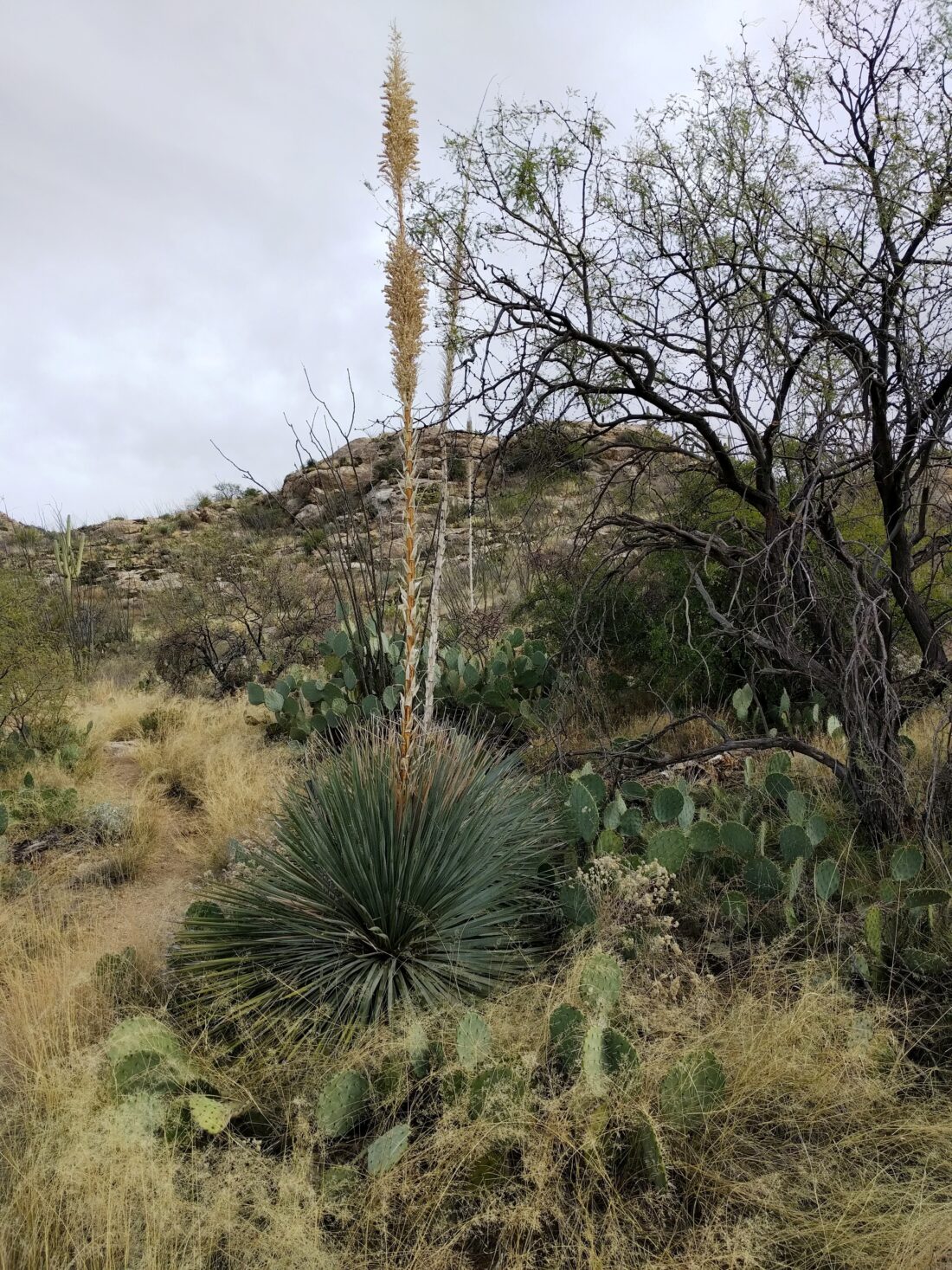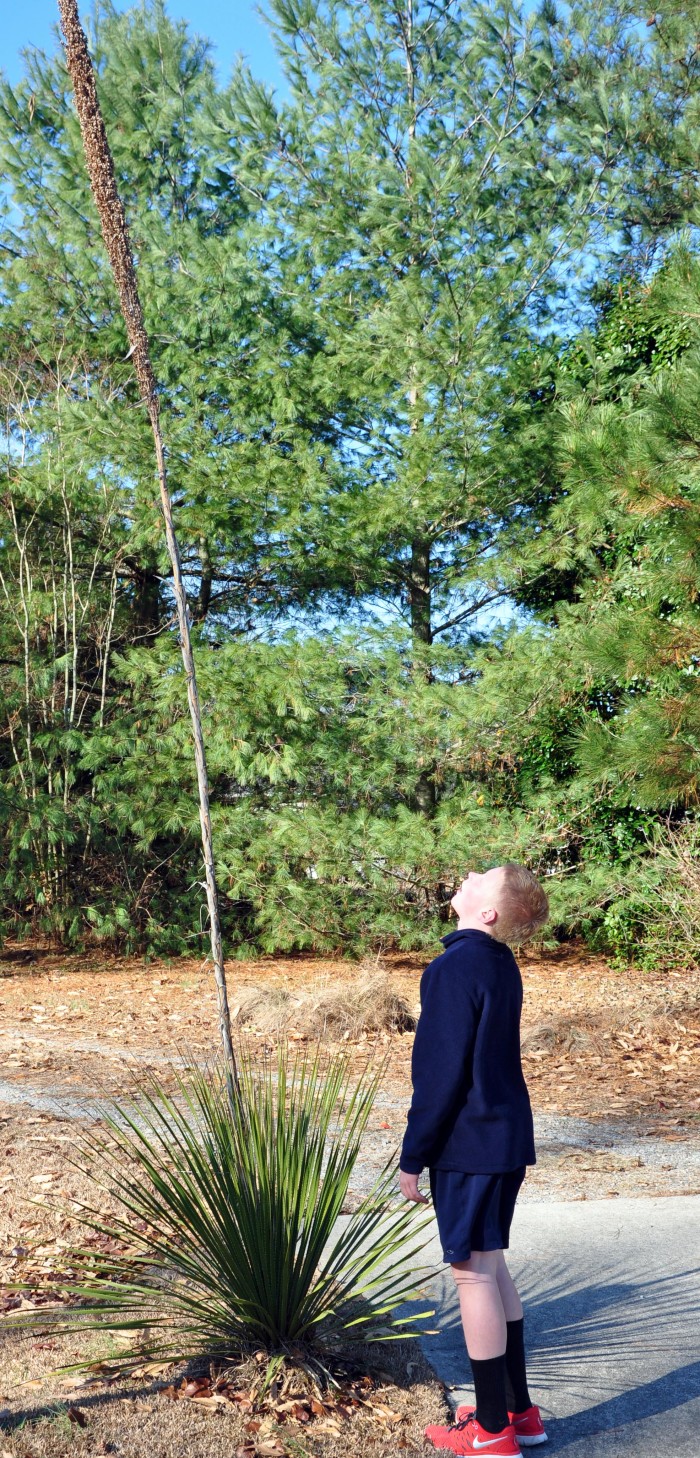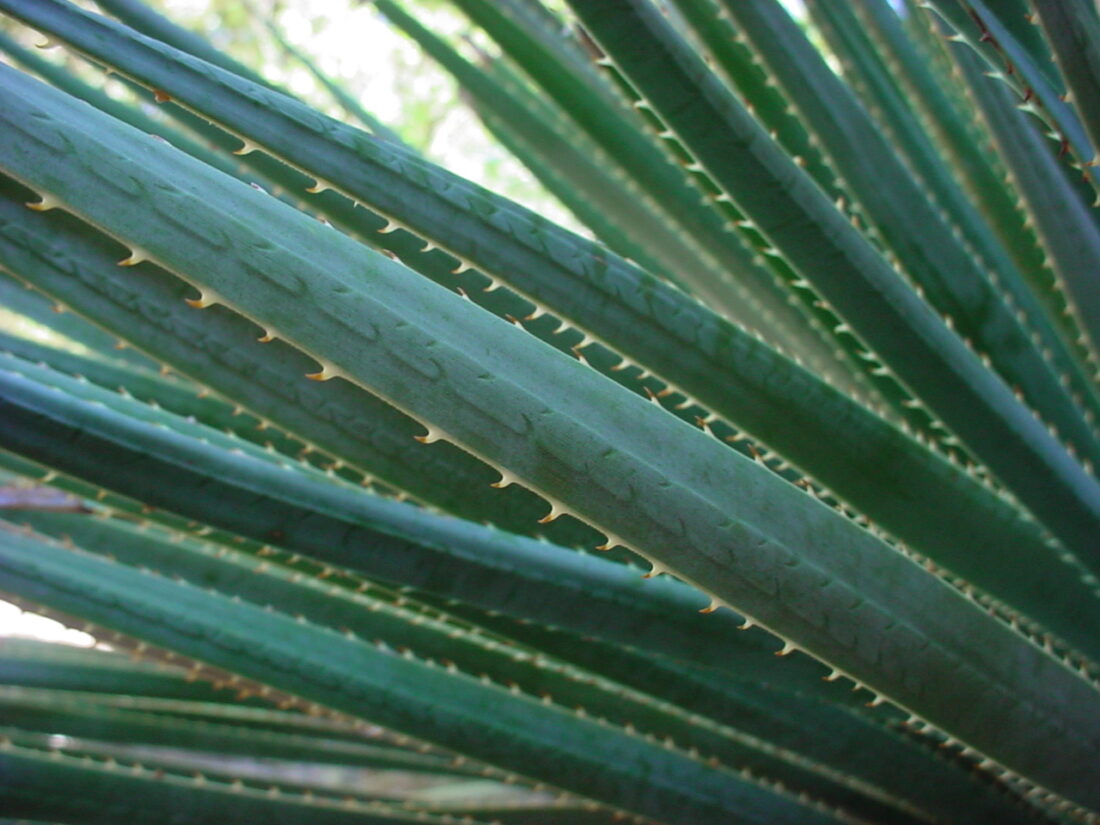I belief that you just had an exquisite Thanksgiving. We loaded up our automotive Tuesday night time and departed Maine for North Carolina at 4 a.m. on Wednesday morning. It was a protracted drive, however our children have been nice—no small feat contemplating we have been masking over 1,000 miles in a single day. We lastly rolled into my mom’s driveway exterior of Raleigh round 11:30 Wednesday night time, road-weary however glad to be there.
After all, seeing household was great, however I had one more reason for my pleasure. Beside my mom’s driveway, standing tall and proud, was a plant I had planted over 15 years in the past—a Dasylirion wheeleri, or Wheeler’s blue sotol, in full, spectacular bloom. I had positioned it by her mailbox, a spot the place little else appeared to thrive. However I had a hunch this desert native may admire the powerful love. Again within the late ’90s, once I labored at Plant Delights Nursery, I seen a number of massive Dasylirion thriving proper alongside the highway in a dry ditch financial institution—a harsh spot by any gardener’s requirements. That gave me the thought to strive it in my mother’s equally cussed patch of soil.

Okay, I’m attending to the thrilling half—you need to see this factor in flower! The flower stalk is not less than 15 toes tall, towering like a botanical skyscraper beside the driveway. The photograph above reveals our son, Alex, standing subsequent to it, staring up in awe. It’s exhausting to not be impressed by a plant that appears prefer it’s attempting to the touch the sky.

Dasylirion wheeleri is native to the arid landscapes of the southwestern United States, from Arizona to Texas, the place it thrives in rocky, well-drained soils. But, right here it was, thriving within the humid, generally unpredictable local weather of North Carolina. The plant itself varieties a symmetrical rosette of blue-gray, serrated leaves, every about 2 toes lengthy and 1-2 inches vast. The sharp spines alongside the leaf margins give away its household ties to agave, although sotol carries a lighter, extra refined look in comparison with its spikier cousin. Regardless of its delicate, nearly decorative look, this plant is hard as nails—it laughs within the face of drought and calls for full solar to really shine.
The flowering technique of Dasylirion wheeleri is an occasion in itself. The towering flower spike emerges from the middle of the rosette, pushing upward like a slow-motion firework. Coated in tiny, cream-colored flowers, the stalk turns into a magnet for pollinators. Bees, butterflies, and even hummingbirds can’t resist the attract. It’s not only a visible spectacle; it’s an ecological one.

I need to admit that the success of this plant in my mother’s backyard impressed me to strive my luck additional north. This previous summer time, I purchased a Dasylirion wheeleri for the gardens at Coastal Maine Botanical Gardens. Now, I’m absolutely conscious that the probabilities of it surviving our brutal Maine winters are slim. However gardeners are nothing if not optimistic. If we will supply a cold-hardy provenance—maybe from a inhabitants rising at greater elevations—it’d simply stand an opportunity. For now, we’re bulking ours up within the greenhouse, giving it just a few years to develop a robust root system earlier than we dare plant it exterior. I think it could discover higher luck alongside Lengthy Island, the place winters are milder.
If any northern gardeners have managed to coax this desert magnificence by means of a winter or two, I’d love to listen to your tales. Generally, essentially the most rewarding crops are those that problem us essentially the most, and I’m hoping to offer this royal sotol a throne in our northern gardens.
-Rodney
Pictures: Rodney Eason, Western New Mexico College, Crops Nouveau until in any other case famous.
